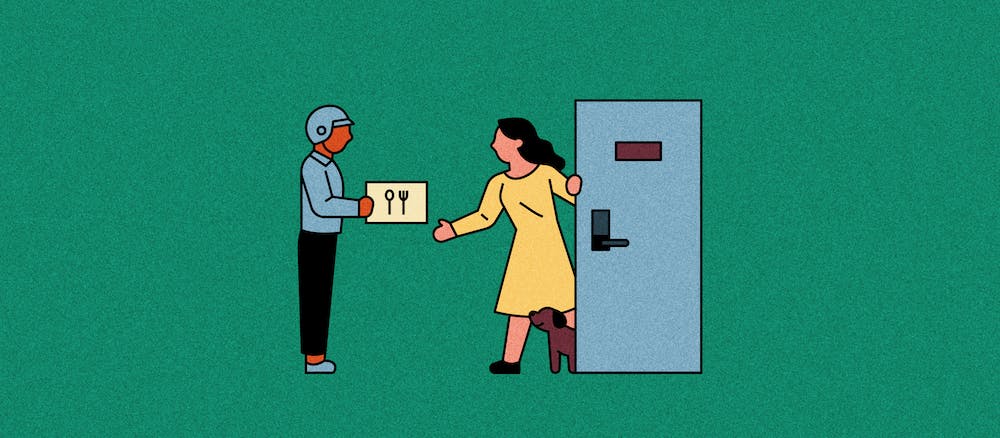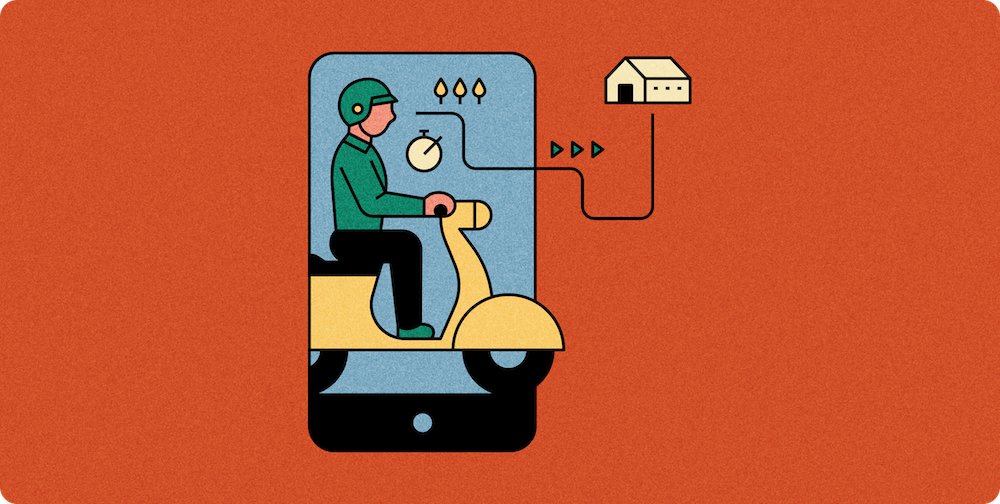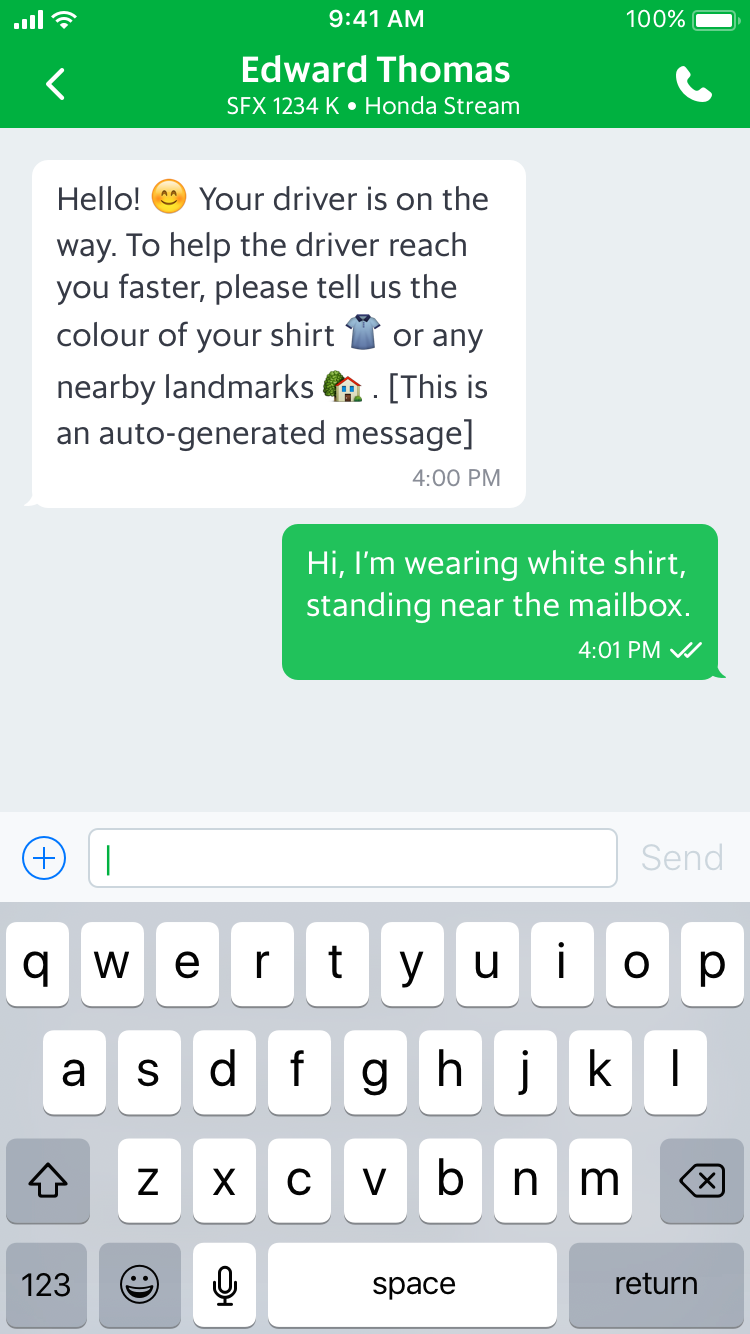Keep customer experience at the heart of on-demand services

While on-demand delivery has been picking up speed for several years, the pandemic created a lot of momentum, particularly in the on-demand grocery space, with dozens of new startups entering the market.
When we look at the European market, we learn a lot from how these companies prioritize the customer experience. With so much competition, it truly is the final battleground companies face.
Keep reading for a snapshot of the European on-demand grocery delivery startup market and a breakdown of how on-demand delivery businesses can leverage customer experience to differentiate themselves in this crowded market.
Europe’s highly competitive grocery market
In Europe, the on-demand grocery delivery sector has seen enormous growth, with established players like Uber Eats, DoorDash, Delivery Hero, and Deliveroo challenged by an army of startups receiving significant investments as they race to corner the market.
And it truly is a race. We’ve gone from next-day delivery to same-day delivery to one-hour delivery, and now a growing number of startups are promising grocery delivery in under 15 minutes.
These startups are rushing to scale and establish technology and operational moats, creating dark stores––the grocery equivalent of ghost kitchens––to deliver on their promises of instant delivery.
Most of these startups function more as neighborhood corner shops, offering a smaller assortment of products rather than functioning as full-blown grocery stores. This hyper-local approach, paired with the use of micro-fulfillment dark stores, allows these startups to complete delivery within 10-15 minutes.
Unlike more prominent players, many of these startups are turning away from the gig economy model to employ their delivery staff. Some, like Zapp, are focusing on sustainability, utilizing all-electric fleets.

[FREE TOOL] How does your app's engagement score compare to industry standards?

Here’s a roundup of some of the startups in this space:
- London-based grocery delivery startup Dija raised £20 million in seed funding.
- Istanbul-based Getir, valued at over $7.5 billion, recently acquired Barcelona-based instant delivery startup, Blok, allowing it to roll out in Italy, Spain, and Portugal.
- London-based Jiffy has raised £2.6 million in seed funding in preparation for its launch. The startup has plans to launch 20 local fulfillment hubs across the U.K. in 2021.
- Berlin-based Flink recently raised $240 million to expand into more cities. Flink is already active in 24 cities across Germany, France, and the Netherlands. Its self-operated dark stores carry an assortment of 2,400 items.
- Also based in Berlin, 10-minute grocery delivery startup Gorillas has raised $290 million in Series B funding, bringing its valuation to over $1 billion.
- London-based Zapp has reportedly raised $100 million in an unannounced Series A round.
- Also based in London, Weezy has raised £1 million in pre-seed funding and plans to expand its London footprint with another 15 fulfillment centers by the end of 2022. Weezy is sourcing products from independent local markets, butchers, bakers, and other local businesses.
- Barcelona-based Glovo, which already has more than 10 million users, has raised €450 million in Series F funding. Glovo started as a restaurant takeout delivery service before expanding to include grocery, pharmacy, and other deliveries.
- Helsinki-based Wolt started in restaurant delivery and expanded into the grocery and retail sectors. Wolt is active in 120 cities across 23 countries in Europe, Japan, and Israel and recently raised $530 million in new funding.
- Everli, based in Italy and operating in Poland, France, and the Czech Republic, recently raised $100 million in Series C funding.
- Czech Republic-based Rohlik, which delivers both groceries from established grocers and fare from local businesses, has raised €190 million.
- Paris-based Cajoo has raised €6 million and aims to launch ten micro-fulfillment centers across the city in the coming months.
- Amsterdam-based Crisp, which focuses on delivering fresh produce, has raised €30 million in Series B funding. It plans to expand its footprint in the Netherlands and later across Europe.
- U.S. instant delivery startup goPuff, active in more than 650 U.S. cities, is also interested in entering the European market and is reportedly considering acquiring or investing in UK-based Fancy.
As you can see, the European on-demand grocery landscape is massively competitive, making differentiation a significant challenge–particularly given the low switching cost for consumers.
New entrants offer heavy discounts to entice customers to try their service, and consumers are happily shopping for the best deal––and often have multiple delivery apps on their phones to choose from.
In addition to establishing economies of scale and robust driver networks that enable them to offer low prices and lightning-fast delivery, on-demand apps must deliver a better customer experience to foster loyalty.
What drives a positive customer experience in the on-demand economy?
When everyone is competing on speed and cost, the customer wins at every turn. But how can on-demand businesses differentiate themselves when there’s so much competition, and the switching cost for users is so low?
Factors like speed, cost, and reliability are absolutely table stakes for on-demand businesses. The true differentiators will be factors like product choice, personalization, loyalty programs, transparency, and exception handling (how the company responds to order errors).
Below, we’ve summarized some factors that contribute to an excellent on-demand customer experience and help businesses differentiate themselves in this crowded market.
User interface and ease of use
How user-friendly is the app? How fast is it? If your app crashes and users start over, they will likely switch to another one. If your app lacks features or doesn’t accept multiple payment options, you could lose out to a competitor.
Reliability and consistency
Your app should be consistently reliable. Service should have sufficient resources to be available constantly. If users wait a long time for a driver/delivery, they might not see your service as reliable.
Choice and selection
Does the service stock items the consumer prefers and is searching for? How often is your inventory out of stock or unavailable?
Personalization
Does the service become familiar with the user’s preferences over time? If a user repeatedly orders the same items, that item should show up front and center. Many apps can make recommendations based on a user’s preferences and offer tailored deals.
Loyalty programs and rewards
Are users rewarded for their loyalty? Offering rewards can incentivize customers to return and spend more.
Sustainability and alignment with customer values
Does the service utilize environmentally-friendly delivery methods and packaging? Are employees treated fairly?
Exceptions handling
When things go wrong, it should be easy for customers to get assistance and resolve issues. Addressing customer pain points and resolving complaints are extremely important in today’s market.
Transparency
Does the customer encounter unexpected costs? Is the delivery ETA provided accurate? Does the app offer real-time order location tracking?
Communication
Your customer should be able to contact the service provider or delivery partner in real time. Providing in-app communication and messaging can streamline the user’s experience. You can also enhance communication with pre-configured message suggestions or by allowing hands-free voice notes.

In-app messaging is a customer experience must-have for on-demand apps
In a perfect on-demand delivery transaction, the customer places their order, the driver collects it from the restaurant, store, or fulfillment center, speedily delivers it and hands it over to the customer.
But what happens when things go wrong? What happens when the customer enters the incorrect delivery address, an item they ordered is out of stock, or the driver gets stuck in traffic or can’t find the right entrance?
In these scenarios, in-app communication channels like messaging, voice, and video calling can make all the difference between a smooth delivery experience and a canceled or undelivered order.
This is precisely why companies like iFood joined the ranks of on-demand services in trusting Sendbird’s in-app chat API to provide it with in-app chat capabilities.
For more information on how on-demand businesses can improve their customer experience and profit margins with in-app messaging, check out Sendbird’s On-demand guide to in-app chat.










